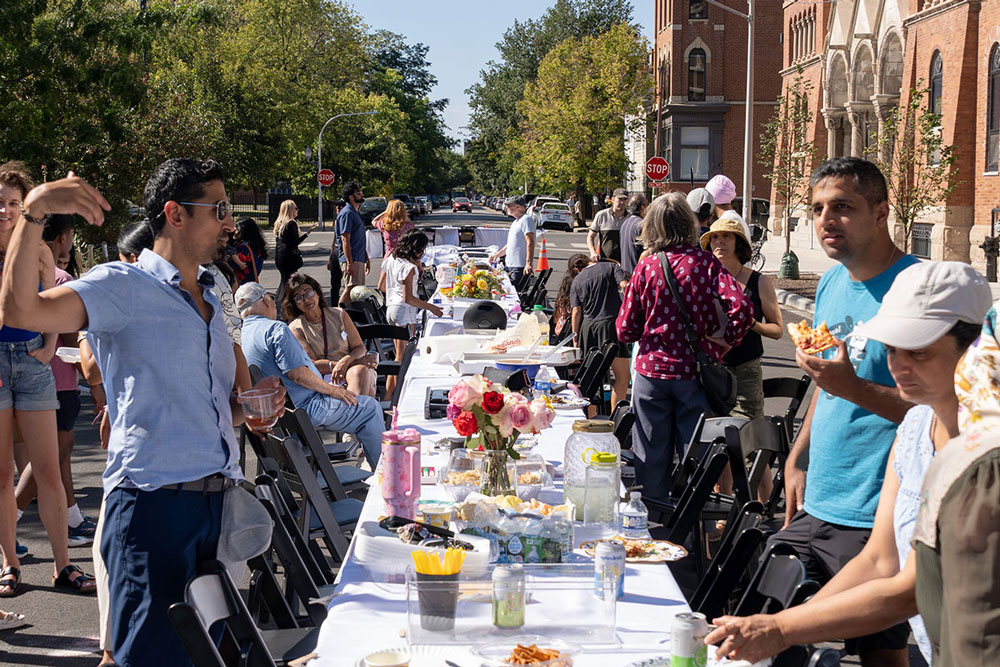Shanelle Matthews: I mentioned earlier that using disinformation to delegitimize radical movements in the United States isn’t new. Some of the same infrastructure that we use, that was used in the 20th century, has spilled over into the 21st century. Throughout the 20th century, leftists played a really crucial role in virtually every progressive social movement—labor organizing, civil rights and Black liberation, antiwar and peace movements, feminism, gay rights, HIV and AIDS, environmentalism, anti-globalism, you can go on and on. And in many ways the Left has shaped the terms of the debate and the American political culture in the 20th century and often forced mainstream politicians to respond to their arguments. I would actually argue that today’s Left has the same kind of narrative power they’re doing. We do not have the political or economic power to really shift the material conditions of our people, and those two things are really at odds with each other. We should talk about that another day.
Understanding the history of the Left is really critical to understanding the targeting of it. So, let’s hop really quickly in the time machine. The year is 1919. World War I is over, and the US empire is terrified of the threat of communism and its aftermath. So, the then called Bureau of Investigation created the “radical division.” The goal of this unit was to conduct counterintelligence and anti-radical investigations and to neutralize domestic threats and communist radicals who were targeted as “un-American.” This project was incredibly efficient. Left-wing organizations were effectively decimated with the Communist Party membership dropping from over 27,000 in 1919 to just 8,000 the next year. If we get back in our time machine, the year is 1968. The very same state infrastructure that was used to decimate and dismantle the Communist party half a century earlier was used to instigate violence between two Black liberation organizations, the Black Panther Party and Organization Us, which is led by Ron Karenga. The bureau used what is called “anonymous mailings” and sent letters to party members warning about bad activities of their co-party members and to disrupt party cohesion and to stir shit up basically. The FBI director at the time, J. Edgar Hoover, the czar of the FBI, sent a memorandum to FBI field offices instructing them to devise plans to exploit the conflict between the two organizations. So, this is a very specific type of disinformation. In 1969, this actually resulted in a gun battle between the two groups on the UCLA campus, which ended in the deaths of two Black Panther members, John Huggins and Bunchy Carter. Later, in 1969, two other Black Panther members were killed, and one was wounded. And there was a memorandum from the LA field office of the FBI dated May 26, 1970, that confirmed that the surge of conflict that left four Panthers dead suited their objectives, and more would be encouraged. So, if we’re back in our time machine, and it’s 2017, this issue is right on my doorstep. In 2017, I was the Director of Communications for the Black Lives Matter Global Network. And at the time, the FBI’s counterterrorism division invented a brand new label for us. They designated us, the Movement in Defense of Black Lives, as Black Identity Extremists. And they used acts of violence that were wholly unrelated to BLM to justify targeting Black dissident voices. And their goal, broadly, was to categorize Black activists as threats to national security, justifying an intensification of government surveillance, domination, and punishment. At the same time—and this is distinct in many ways from how Black social movements, insurgent social movements, were targeted in the ’60s, ’70s, and ’80s—Russian operatives were working overtime to stir discord related to America’s long standing racial divides by infiltrating online communities of the Black Lives Matter movement and, to a more severe degree, the online groups frequented by ordinary people. Again, this is not a new tactic, but we’re living in different times.
Sign up for our free newsletters
Subscribe to NPQ's newsletters to have our top stories delivered directly to your inbox.
By signing up, you agree to our privacy policy and terms of use, and to receive messages from NPQ and our partners.
If we’re parking our time machines back in the present, one really obstinate and ubiquitous element of mis- and disinformation are racist, homophobic, sexist, and transphobic tropes that work to dehumanize [people] and justify oppression, violence, and social exclusion. These efforts are highly antithetical to the work of progressive and social movements.











